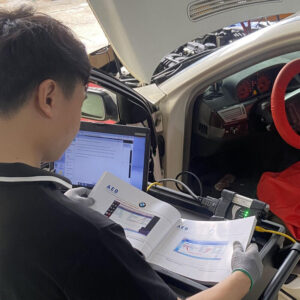
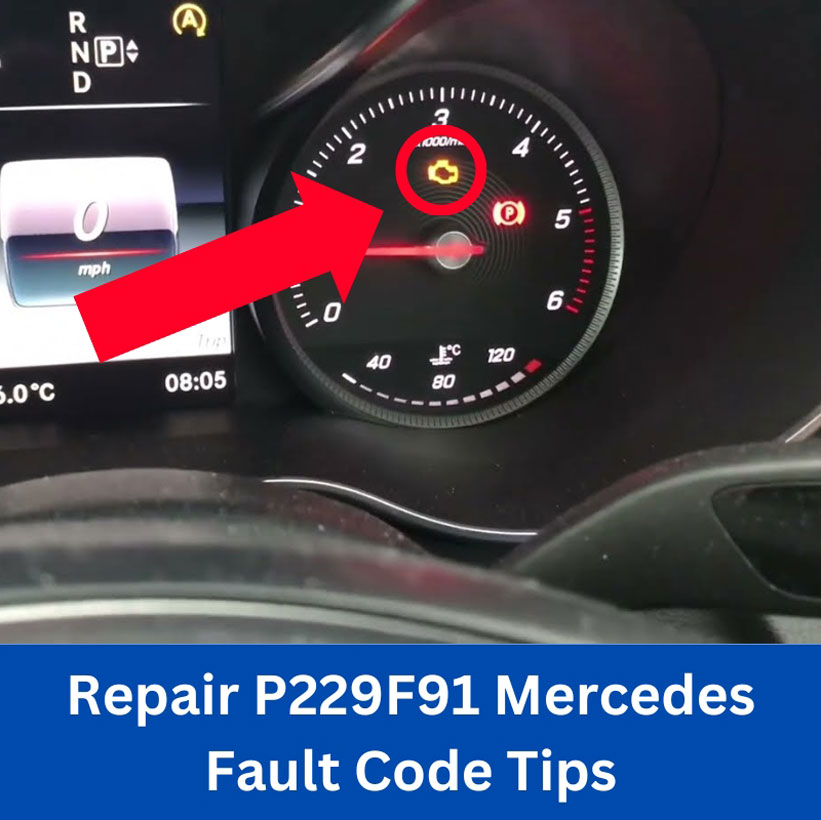
5 Steps to Repair P229F91 Mercedes Fault Code
Contents
- 1. What is the P229F91 Mercedes Fault Code?
- 2. Symptom of P229F91 Mercedes-Benz
- 3. Causes of P229F91 Mercedes Fault Code
- 4. How to Fix P229F91 Mercedes Fault Code
- 4.1. Tools Required
- 4.2. Step-by-step Guide to Fix P229F91 Mercedes Fault Code
- 5. Related Mercedes Fault Codes to P229F91
- 5.1. Other NOx Sensor 2 (Downstream) Related Faults
- 5.2. Upstream NOx Sensor 1 Related Codes
- 5.3. SCR / AdBlue System Faults
- 5.4. Exhaust Gas Temperature (EGT) Sensor Related Codes
- Contact AutoExplain for Quick Support
If you own a Mercedes-Benz with an AdBlue SCR system, encountering the P229F91 Mercedes fault code is not uncommon. This diagnostic trouble code (DTC) indicates a problem with the NOx sensor circuit range/performance on Bank 2. Addressing this issue promptly is crucial to maintaining optimal vehicle performance and reducing excessive emissions. In this guide, we’ll walk you through 5 essential steps to diagnose and fix the P229F91 Mercedes fault code effectively.
1. What is the P229F91 Mercedes Fault Code?
The P229F91 error code specifically points to a problem within the NOx sensor circuit on Bank 2 of your Mercedes-Benz vehicle equipped with a Selective Catalytic Reduction (SCR) system using AdBlue. This system is vital for reducing harmful nitrogen oxide emissions, contributing to a cleaner environment and ensuring your vehicle meets stringent emission standards.
The NOx sensor’s role is to precisely monitor the levels of nitrogen oxides in the exhaust gases after the catalytic converter. This data is then relayed to the engine control unit (ECU), which adjusts the AdBlue injection to optimize NOx reduction. When the ECU detects that the signal from the Bank 2 NOx sensor is outside the expected range or its performance is not as anticipated, it triggers the P229F91 fault code, illuminating the check engine light on your dashboard. Understanding the function of the NOx sensor and the SCR system is the first crucial step in effectively addressing this issue. The proper operation of this system not only benefits the environment but also ensures optimal engine performance and fuel efficiency for your beloved Mercedes-Benz.
Common Mercedes-Benz models affected by this error include:
- Sprinter W906
- W222, W205, W212, S212, A207, C207
- W213, W238, GLC, W166 GLE Bluetec
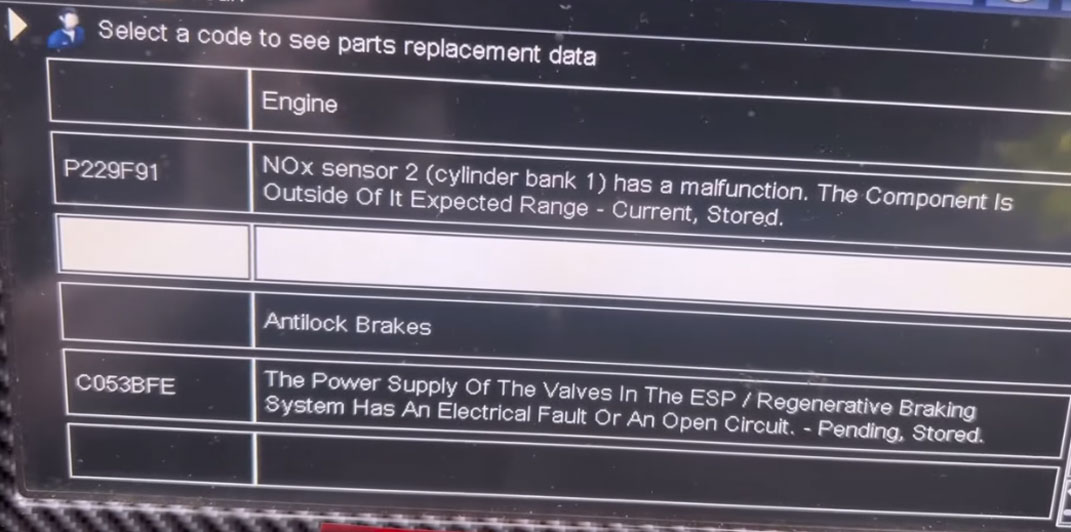
2. Symptom of P229F91 Mercedes-Benz
When the P229F91 Mercedes-Benz malfunction indicator appears, it’s often accompanied by several telltale signs that can indicate an issue with the NOx sensor system. Being aware of these symptoms can help you identify the problem early and take appropriate action. Common indicators include:
-
Check engine light illumination: This is usually the first and most obvious sign that something is amiss with your vehicle’s emission control system. The check engine light serves as a general warning that a fault code has been registered by the ECU.
-
Increased fuel consumption: A malfunctioning NOx sensor can lead to incorrect adjustments in the AdBlue injection and combustion processes, potentially resulting in reduced fuel efficiency. You might notice that you need to refuel more frequently than usual.
-
Thick black smoke from the exhaust: While not always present, particularly in the early stages of the problem, excessive black smoke can indicate an imbalance in the air-fuel mixture or incomplete combustion, which can be linked to NOx sensor issues affecting the overall engine management.
-
Reduced engine performance: The ECU might limit engine power as a precautionary measure when it detects a fault in a critical emission control component like the NOx sensor. This can manifest as a noticeable decrease in acceleration and overall responsiveness.
If you observe any of these symptoms in conjunction with the appearance of the P229F91 OBD2 code for Mercedes, it’s essential to investigate the issue promptly to prevent potential further complications and ensure your vehicle operates within optimal parameters. Addressing these symptoms not only resolves the immediate fault but also contributes to the longevity and efficient performance of your Mercedes-Benz.
3. Causes of P229F91 Mercedes Fault Code
Several underlying factors can lead to the triggering of the P229F91 Mercedes engine trouble code. Identifying these potential causes is crucial for an accurate diagnosis and effective repair. Common reasons for this fault code include:
-
Faulty NOx Sensor Bank 2: The most direct cause is often a malfunctioning NOx sensor itself. Over time, these sensors can degrade due to exposure to high temperatures and exhaust gases, leading to inaccurate readings or complete failure.
-
Open or short circuit in the NOx sensor wiring: Damage to the wiring harness connecting the NOx sensor to the ECU can disrupt the electrical signals. This can include frayed wires, cuts, or breaks in the insulation, leading to open or short circuits.
-
Poor electrical connection in the NOx sensor circuit: Loose, corroded, or damaged electrical connectors can impede the proper transmission of signals between the NOx sensor and the ECU. This can result in intermittent faults or a complete loss of communication.
Furthermore, the P229F91 Mercedes problem code may sometimes be accompanied by related fault codes such as P2202, P2200, P2201, P220162, P2203, P2204, P220400, and P220000. These additional codes also indicate various issues within the NOx sensor system and can provide further clues during the diagnostic process. Addressing the root cause, whether it’s sensor failure, wiring issues, or connection problems, is essential for a lasting solution to the P229F91 Mercedes-Benz error information. Regular maintenance and attention to these potential issues can help prevent future occurrences.
4. How to Fix P229F91 Mercedes Fault Code
4.1. Tools Required
- Xentry Diagnostic OpenShell/Xentry PassThru
- MB Star C4 / C5 / C6
- Pliers and Screwdrivers
- NOx Sensor Socket or Wrench
4.2. Step-by-step Guide to Fix P229F91 Mercedes Fault Code
Step 1: Perform a Full System Scan with Xentry
To begin the diagnostic process accurately, utilize the Mercedes-Benz specific Xentry diagnostic software. This tool provides in-depth access to your vehicle’s electronic control units and fault code memory.
-
Connect the Xentry tool to your Mercedes-Benz vehicle’s OBD2 port, typically located under the dashboard on the driver’s side.
-
Initiate a full system scan to identify all stored fault codes, including the P229F91 Mercedes-Benz P229F91 malfunction indicator and any related DTCs like P2202 or P220000.
-
Carefully analyze the live data readings from the NOx sensor Bank 2. Pay attention to the sensor’s voltage, resistance, and NOx readings to see if they fall within the expected parameters.
Using Xentry allows for a comprehensive assessment of the vehicle’s electronic systems, providing valuable insights into the nature and extent of the problem. This initial step is crucial for a targeted and efficient repair process.
Step 2: Inspect the NOx Sensor and Wiring
A thorough physical inspection of the Bank 2 NOx sensor and its associated wiring is the next critical step.
-
Locate the Bank 2 NOx sensor in your vehicle’s exhaust system. Refer to your vehicle’s service manual or a reliable online resource like Alldata or Autodata for the exact location.
-
Carefully examine the wiring harness connected to the sensor. Look for any signs of physical damage such as loose connections, frayed or cracked wires, or corroded terminals.
-
Ensure that the electrical connector is securely attached to the sensor. Disconnect and reconnect it to check for any looseness or corrosion on the pins. Clean the pins with an electrical contact cleaner if necessary.
-
Verify that the NOx sensor itself is securely mounted and free from any physical damage or contaminants.
If you identify any damage to the wiring harness, it should be repaired or replaced by a qualified technician. Ensuring a clean and secure electrical connection is vital for the proper functioning of the NOx sensor.
Step 3: Verify AdBlue Quality and Exhaust System Condition
While the P229F91 code directly relates to the NOx sensor, issues with AdBlue quality or the exhaust system can indirectly impact sensor performance.
-
Ensure that the AdBlue tank cap is tightly sealed to prevent contamination.
-
Check the AdBlue fluid level and refill if it is low. Use only high-quality AdBlue that meets the ISO 22241 standard.
-
If you suspect contamination, consider draining and cleaning the AdBlue tank. Follow the manufacturer’s recommendations for this procedure.
-
Perform an exhaust system regeneration to remove any accumulated soot buildup in the Diesel Particulate Filter (DPF). This process helps ensure proper exhaust flow and optimal conditions for the NOx sensor. Xentry can typically initiate a regeneration cycle.
Maintaining the quality and appropriate levels of AdBlue, along with ensuring a clean exhaust system, contributes to the overall health and performance of the SCR system and the NOx sensors.
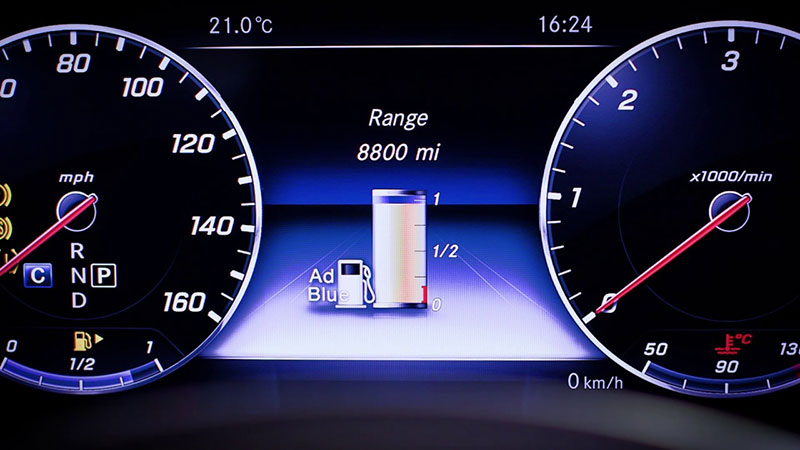
Step 4: Reset and Reprogram the NOx Sensor Using Xentry
If the physical inspection of the sensor and wiring reveals no obvious issues, and the AdBlue system is functioning correctly, the next step is to attempt a reset and reprogramming of the Bank 2 NOx sensor using Xentry.
-
Connect the Xentry tool to your vehicle and navigate to the NOx sensor control module.
-
Select the option to reset the NOx sensor. This will clear any learned adaptations and error data associated with the sensor.
-
Perform a NOx sensor adaptation process as guided by the Xentry software. This allows the ECU to recalibrate and learn the specific characteristics of the sensor.
-
After the reset and adaptation, clear all stored fault codes from the ECU.
-
Conduct a test drive under various driving conditions to see if the P229F91 code returns. Monitor live data from the NOx sensor with Xentry during the test drive to ensure it is functioning within the expected parameters.
Resetting and reprogramming the sensor can often resolve temporary glitches or minor deviations in sensor performance.
Step 5: Use Electrical Wiring Schematics for Further Inspection
If the P229F91 Mercedes P229F91 error code persists after resetting the sensor, a more detailed analysis of the electrical circuit is necessary.
-
Utilize reliable automotive information databases such as Alldata, Autodata, or Starfinder to access the specific wiring schematics for your Mercedes-Benz model and the NOx sensor circuit on Bank 2.
-
Carefully trace the wiring diagram to identify all components, connections, and ground points within the circuit.
-
Use a multimeter to check for continuity, voltage, and resistance at various points in the circuit, following the wiring diagram. This can help pinpoint potential wiring shorts, open circuits, or issues with connectors that might not be visually apparent.
-
Pay close attention to ground connections, as poor grounding can often lead to sensor malfunctions. Ensure all ground points are clean and secure.
-
Repair or replace any damaged wires, connectors, or other components identified during this detailed circuit analysis.
A methodical approach using wiring schematics can uncover hidden electrical issues that are contributing to the P229F91 fault code.
Step 6: Replace the NOx Sensor Module (If Necessary)
If all other diagnostic steps have been completed and the P229F91 code remains unresolved, the NOx sensor module itself is likely faulty and needs to be replaced.
-
Obtain a genuine Mercedes-Benz NOx sensor specifically designed for the Bank 2 location in your vehicle model. Using a genuine part ensures proper compatibility and performance.
-
Carefully remove the old NOx sensor, following the instructions in your vehicle’s service manual.
-
Install the new NOx sensor, ensuring it is securely mounted and the electrical connector is properly attached.
-
After replacing the sensor, it is crucial to recalibrate it using the Xentry software. Follow the prompts in Xentry to perform the NOx sensor adaptation process for the new sensor.
-
Clear all stored fault codes and conduct a thorough test drive to verify that the P229F91 code has been eliminated and the SCR system is functioning correctly.
Replacing the NOx sensor module with a genuine part and performing the necessary calibration is often the final step in resolving persistent P229F91 Mercedes-Benz P229F91 error information.
5. Related Mercedes Fault Codes to P229F91
5.1. Other NOx Sensor 2 (Downstream) Related Faults
These codes often accompany P229F91 when the NOx sensor 2 is completely damaged, shorted, or disconnected.
| Code | Description |
|---|---|
| P229F92 | NOx sensor 2 signal implausible |
| P22A000 | NOx sensor 2 circuit open |
| P22A062 | NOx sensor 2 signal short circuit to ground |
| P22A064 | NOx sensor 2 signal short circuit to positive |
| P22A01C | NOx sensor 2 heater circuit malfunction |
5.2. Upstream NOx Sensor 1 Related Codes
If NOx Sensor 1 (before the SCR) is also faulty, it will affect how the ECU compares NOx reduction efficiency across the SCR system.
| Code | Description |
|---|---|
| P2200 | NOx sensor 1 circuit malfunction (Bank 1) |
| P2201 | NOx sensor 1 – Range/performance problem |
| P2202 | NOx sensor 1 – Signal too low |
| P2203 | NOx sensor 1 – Signal too high |
| P2204 | NOx sensor 1 – Heater control circuit fault |
🔁 The ECU uses both NOx sensors to determine if AdBlue injection is reducing NOx emissions effectively.
=> You may also like:
5.3. SCR / AdBlue System Faults
P229F91 can trigger secondary issues in the SCR (Selective Catalytic Reduction) system due to missing or incorrect feedback from the NOx sensor.
| Code | Description |
|---|---|
| P204F | Reductant system performance (Bank 1) |
| P207F | Reductant quality performance |
| P13DF/P13DF00
|
Emission system malfunction – engine start may be prohibited |
| P13E0 | Remaining engine starts: X |
| P13E1 | Engine start prohibited (due to unresolved SCR/NOx faults) |
🛑 If these faults persist, Mercedes systems may enter a “start countdown mode” where the engine will eventually refuse to start until the issue is fixed and reset using a diagnostic tool.
=> You may also like:
- How to fix Mercedes P13DF00 DTC
- What is P13DF09 Mercedes fault code
- How to fix P13E400 Mercedes: “Eng Start not possible in XXX km”
5.4. Exhaust Gas Temperature (EGT) Sensor Related Codes
Faulty temperature readings can affect NOx sensor calculations, especially in diesel engines with DPF + SCR systems.
| Code | Description |
|---|---|
| P0544 | Exhaust gas temperature sensor circuit (Bank 1 Sensor 1) |
| P2031 | EGT sensor circuit (Bank 1 Sensor 2) |
| P247A | EGT sensor – Range/performance |
Contact AutoExplain for Quick Support
Fixing the P229F91 Mercedes fault code requires a systematic approach, from diagnostic scanning and wiring inspection to sensor reprogramming and replacement.
If you’re facing the Mercedes Benz P229F91 fault code or planning to delete the AdBlue system but lack the necessary tools or software, AutoExplain offers expert remote assistance via TeamViewer.
We provide comprehensive support for your AdBlue delete process, including:
-
Real-time help from certified automotive technicians
-
Complete diagnostic checks before and after the procedure
-
Fully reversible ECU tuning with secure backups
-
24/7 global assistance
At AutoExplain, we specialize in advanced automotive solutions, such as:
-
AdBlue system reactivation or reinstallation
Whether you’re dealing with the P229F91 fault code on your Mercedes Benz or just need reliable guidance for AdBlue removal, we’re here to help. Contact us anytime via WhatsApp at +1(936)2896695 — our technical team is available 24/7 to support you wherever you are.
For advanced troubleshooting, you can also seek professional technical support to reduce costs and ensure accurate diagnostics. If you need expert assistance, our AutoExplain team is here to help.
Contact us now via Whatsapp +1(936)2896695 to get fastest support from our team!
=> Discover our automotive online repair service

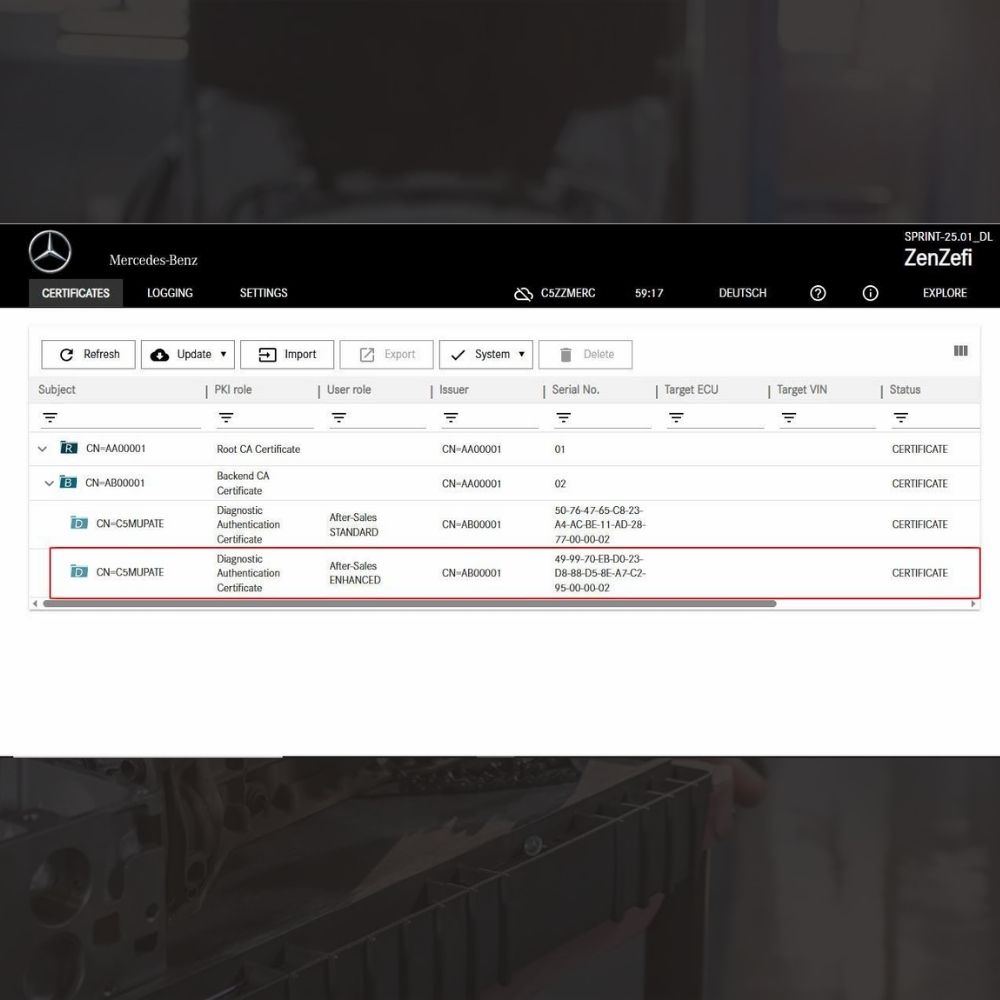
New Mercedes Car Coding Solution with ZenZefi certificate for DTS Monaco 9.02
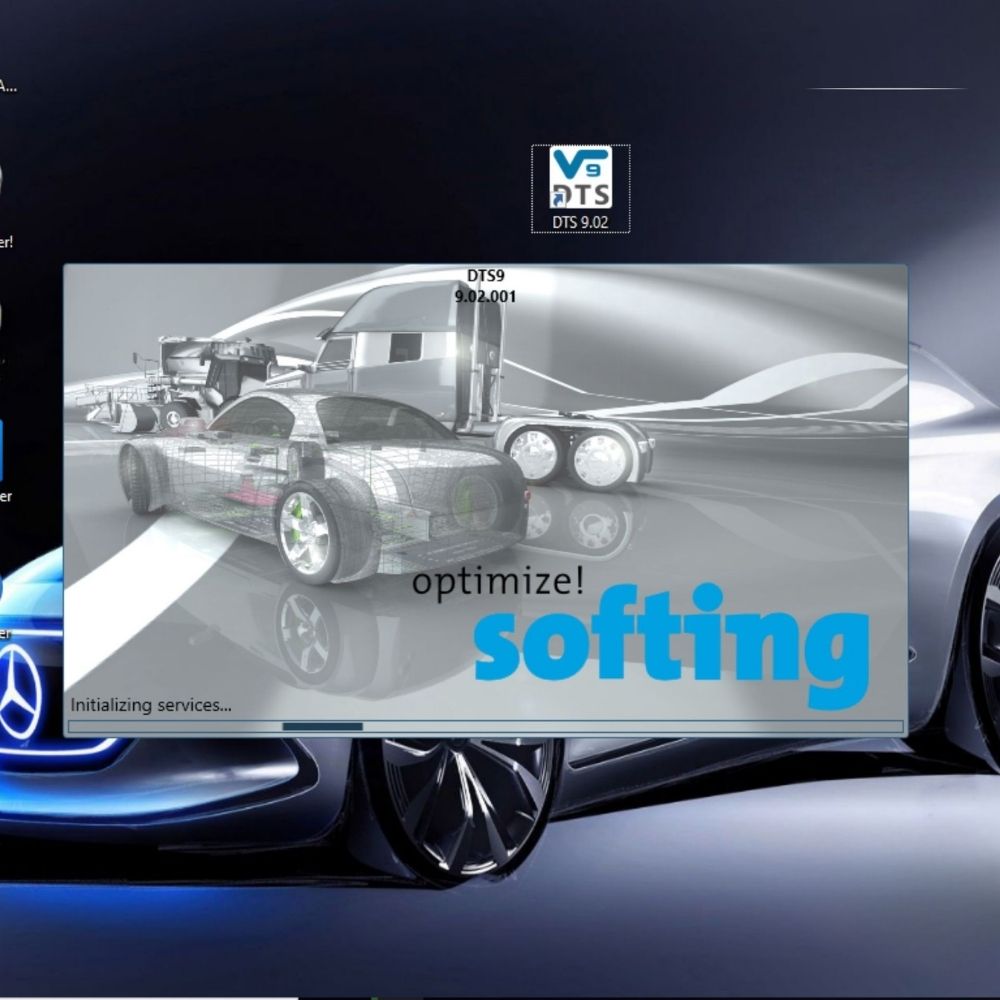
What is DTS Monaco? Key Functions of DTS Monaco Software
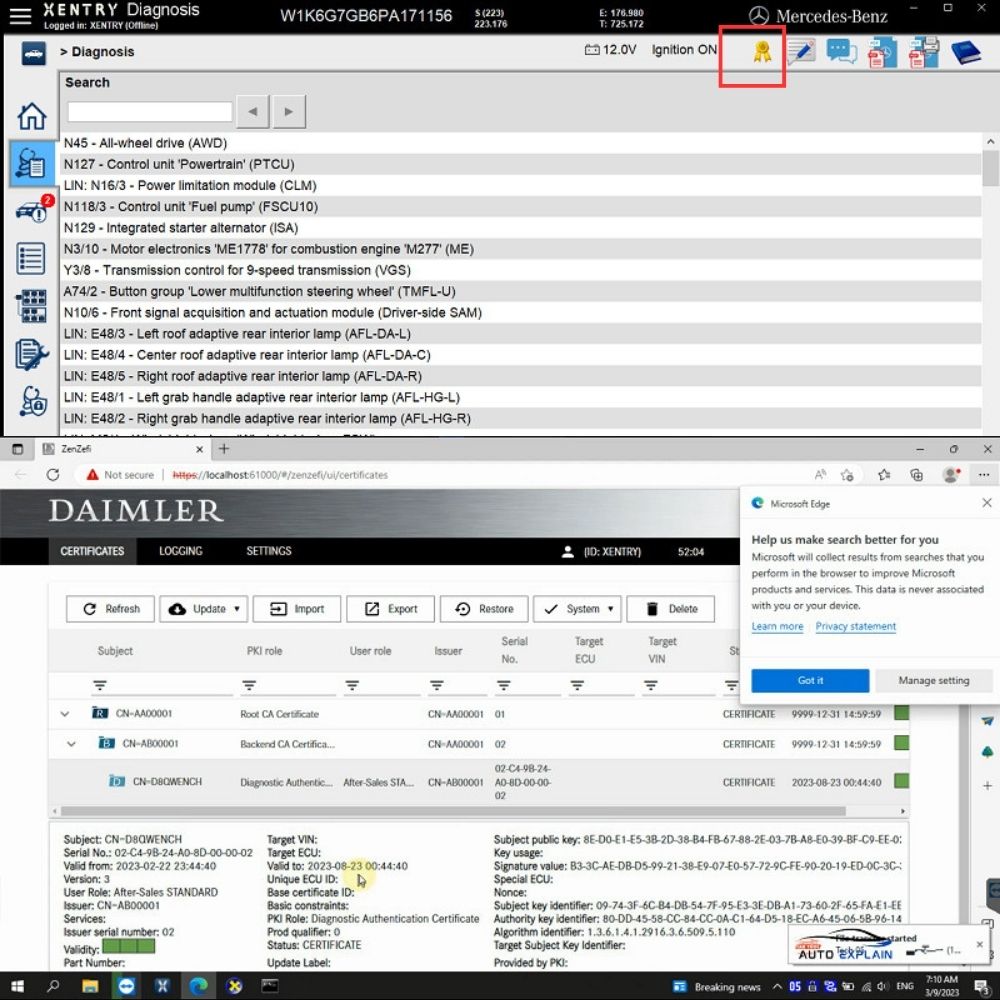
What is the Xentry Certificate Zenzefi? Why You Need It, and When It Is Required?



New Mercedes Car Coding Solution with ZenZefi certificate for DTS Monaco 9.02



